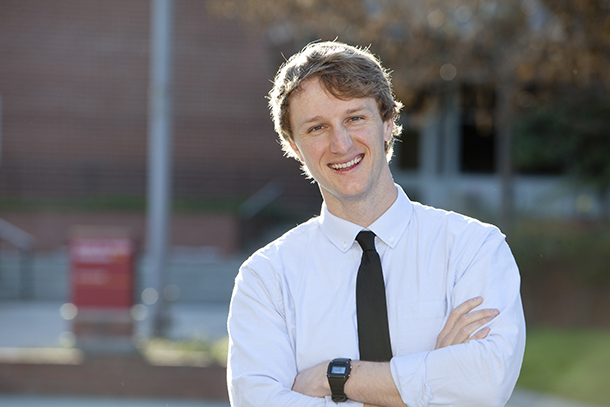Luke Snyder remembers the moment he realized the power of physical therapy.
He was a high-school, cross-country runner in Thousand Oaks when he began suffering from knee pain. In physical therapy, his therapist had him doing hip strengthening exercises — something that confused him at the time. After all, the pain was in his knee, not his hip.
Then, after three weeks of treatment, Snyder was running, and it hit him: The pain was mostly gone.
“I just thought to myself: Oh, that’s interesting. I felt the direct effect of just doing hip exercises and how it altered the mechanics of my knee,” said Snyder, who had always liked physics and mechanics and had even considered a career in engineering.
Just a few years later, when his grandfather was in the hospital with heart issues, Snyder again witnessed physical therapy’s power. “I actually got to see the physical therapist work with him to improve his endurance,” he remembered. “It just improved his quality of life both inside and outside of his home.”
Just the beginning
Snyder, who is graduating from the doctor of physical therapy program at the USC Division of Biokinesiology and Physical Therapy, looks forward to harnessing that transformative power of physical therapy in his own career.
Next year, he will help teach first-year DPT students at USC. Eventually, he would like to run his own physical therapy clinic.
“I want to be that go-to person in the community for grandmas, grandpas, high school athletes, anyone,” he said. “Not just as a physical therapist but as someone to consult about the general health system.”
While in school, Snyder served as the student research collaborator in the Concussion Assessment, Rehabilitation and Education (CARE) Program for Athletic Brain Injury.
The program aims to provide high-quality service to young people with concussions and uses the most up-to-date research.
For the CARE program, Snyder, a former high school athletic trainer, helped develop baseline evaluations for high school athletes, which could be used to assess athletes if they had a head injury or concussion.
“Basically, it’s a way to have numbers to compare so we knew we were making more objective decisions about a safe return to play and rehabilitation,” he explained.
Snyder says his time studying at USC has been incredible and led him to some life lessons.
“There was a point in my life when I thought I’d go to school and come out knowing everything,” he said. “I’ve just come to realize that USC gave me the tools to be a physical therapist. But you know, my true education, is going to be in development every day — and that’s OK. Someone once told me: if you think you know it all, it’s time to retire.”
— Katharine Gammon


